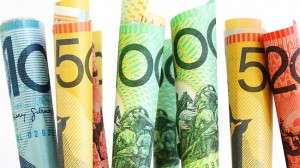We have often had to address the issue of minority interests when valuing businesses in litigation...
PE Multiples in Valuing Small Businesses

The other day, someone came to me about business valuation and mentioned that he thought his $1 million profit before interest and tax business was worth $20,000,000 because companies in his industry on the stock exchange traded on Price to Earning (PE) multiples of 20.
To start with, I had to break down the PE multiple to show how it related to his business. The PE multiple is a Net Profit After Tax (NPAT) multiple where his business would be sold on an EBIT multiple (Earnings before Interest and Tax).
PE multiples are based on after tax and after interest so debt is taken into account where we would value his business before debt and tax.
When looking at multiples, it is important to understand what multiple is being used.
So, let's look at how the PE Ratios (NPAT) convert to an EBIT. The publicly listed company in his industry had a PE multiple of 20 and it was valued at $2 billion with profits after tax of $100 million per year. It had $2 billion in debt and $4 billion in assets. The debt interest rate is 7%.
| $ million Profits | $ million Value | Multiple | ||
| Net Profit After Tax | 100 | 2,000 | 20 | PE Multiple |
| Tax @ 30% | 42 | |||
| Profit Before Tax | 142 | 2,000 | 14 | |
| Interest ($2 billion x 7%) | 140 | |||
| EBIT | 282 | 2,000 | 7 | EBIT multiple |
In this instance, the PE Multiple of 20 is equal to an EBIT Multiple of 7.
Now if we are comparing a business that is listed on the stock exchange with a value of $2 billion, there are a number of adjustments that need to be made to convert the EBIT Multiple of 7 for a publicly listed company to a small company.
- Size Discount or Premium - Generally, large companies have less risk due to diversification of risk in the operations of their business. They have a greater diversification of customers, suppliers, locations, better management structure. Even with publicly listed companies, there is a discount for the smaller companies within the industry which can range up to 20% for the smaller publicly listed companies which are still large companies.
- Liquidity Discount or Marketability Discount - If you own shares in a listed company, you can sell those shares easily in a few seconds to maybe a few weeks for thinly traded shares. If you own shares in a private company, it may take you months or years to sell your shares. The lack of marketability discounts for non-controlling business interests are generally within 35% to 50% of their publicly traded counterparts.
Let's now look at how the Size Premium and the lack of marketability discount affects the multiple:
| EBIT Multiple Public Company | 7 |
| Less: Size Premium @ 20% | (1.4) |
| 5.6 | |
| Less: Lack of Marketability @ 40% | (2.2) |
| EBIT Multiple Small Private Company | 3.4 |
In summary, the PE Multiple of 20 applied to the largest company in his industry converted to an EBIT Multiple of 7.
An investor would have the alternative of investing in the biggest company in the industry and getting an EBIT Return of 14% (1/7) or a small privately owned company in the same market. The smaller company has more risk so a greater return is required. By applying, a size premium discount and a lack of marketability discount, the multiple that applies to Mr X's company is reduced to 3.4.
Technical Note: PE Multiples are minority interests and technically the process used to arrive at a multiple of 3.4 is for a minority interest. If a buyer was to purchase 100% of the company (or a controlling interest), a control premium could be added in the range of 20% to 35% which would increase to EBIT multiple to between 4.1 and 4.6.
There is very little information on the size premium adjustment and the lack of marketability/liquidity discount and these are adjustments that are subject to the valuer's opinion.


